Bembidion properans
Both Bembidion properans and the similar Bembidion lampros are common. I had previously identified a small mumber of each, but recall struggling a bit with some of them. Recently I examined 14 specimens of Bembidion properans/lampros, expecting that such a series would contain examples of both species and that by comparing them I would more easily understand the differences. I spent literally hours examining them, re-examining them and examining them again, and was still not convinced I'd cracked it. Eventually I was confident that many of them were properans but the rest I wasn't sure about. If they were lampros then the keys substantially over-state the differences, but if they were all properans then some properans could show some characters suggestive of lampros. My dilemma was resolved when Adrian Gardner popped round with his collection of Bembidion so I could compare mine with his. He had a series of lampros from the Brecks and after examining these I was confident that all of mine were indeed properans.
The main differences given in Duff's key are the 7th elytral stria and the shape of the frontal furrows. In properans the 7th stria is at least "almost" as evident as the 6th whereas in lampros it is supposed to be "much" less evident or absent. Hackston's key implies that the 7th is absent in lampros (although it doesn't explicity state that, just that lampros has 6 coarse striae and that properans has 7 distinct striae). All 14 of mine had 7 striae but it was difficult to judge how evident the 7th was. Often looking from the side the 7th was just as evident as the 6th but looking at it from above it was noticeably less evident - but to say it was much less evident was a stretch on any of them, and it was certainly never absent. Adrian's specimens helped here. The 6th stria on his lampros was often weaker than the 7th stria on most of mine, and on his the 7th was either absent or both short and indistinct (or if more distinct then extremely short).
Interpreting the frontal grooves was problematic. The grooves are not a simple structure with even edges, shaped one way in one species and another way in the other. The bottom of the groove was pretty much parallel-sided in all my specimens and it was mainly the top of the grooves, where they nearly meet the adjacent parts of the head, where my specimens showed much varation. Eventually I realised that on some specimens the top of the groove expanded outwards, sometimes quite shallowly compared to the deepest part of the groove, so the bottom of the groove was parallel-sided but the top was splayed and, to a lesser or greater extent, shaped as it should be on lampros.
I checked the genitalia for many of them. The diagrams of the males' median lobes in Duff aren't vastly different and of the differences I can see I'm not entirely clear which are species differences and which are individual variation. I also found that they were easy to damage when cleaning or isolating the median lobe, so I had to ignore some of them. As far as I know there aren't any differences in female genitalia, but I had a look at the spermatheca on some, just in case. In the end, genitalia didn't help much.
All my specimens were short-winged. Both species have short and full-winged forms but only in properans is the fully-winged form described as rare. But Duff doesn't say how common it is in lampros, so I'm not sure if I should necessarily expect to find long-winged examples among just a small sample of lampros.
In view of the clear presence of 7 striae I initially tentatively chalked them all up as properans but at first I wasn't convinced. Going on number of records, lampros is the commoner of the two species in Norfolk and I couldn't help notice that the smallest example I had was also the one with frontal grooves that looked best for lampros (lampros averages smaller than properans).
Duff also mentions that the bases of antennomeres 1-3 are reddish in lampros but the antennae were all dark in properans. This is relegated to the small print below rather than the main text - I'm not sure if that's because Duff doesn't think this difference is diagnostic, or at least not consistently so, or if it's just that the character isn't easy to determine in specimens stored in alcohol and so isn't prioritised? Anyway, my specimens showed all sorts of variation in which different segments were or weren't red-based to a lesser or greater extent.
The first few individuals shown below are the ones I thought were relatively clear-cut properans, and then some trickier individuals follow which I wasn't quite sure about until seeing Adrian's lampros specimens.
This one has straight parallel-edged frontal grooves, with just a slight inward deflection well forwards. Stria 7 is rather short but in the basal third it is only slightly less prominent than stria 6. Antennal segments 2 and 3 have faded after death but none seem red-based in the live photos.
, North Elmham, 13-May-22 (A) (1).jpg)
, North Elmham, 13-May-22 (A) (3).jpg)
, North Elmham, 13-May-22 (A) (2).jpg)
, North Elmham, 13-May-22 (A) (4).jpg)
male Bembidion properans showing frontal grooves, elytral striae and median lobe, North Elmham (Norfolk, UK), 13th May 2022
This one has very straight parallel-sided frontal grooves up to an inward kink well forwards of the supraocular bristle. Stria 7 is only very slightly less obvious than stria 6. Antennal segements 3 and 4 (and to a lesser extent 2) have reddish bases.
, North Elmham, 27-May-22 (A) (1).jpg)
, North Elmham, 27-May-22 (A) (2).jpg)
, North Elmham, 27-May-22 (A) (4).jpg)
, North Elmham, 27-May-22 (A) (3).jpg)
, North Elmham, 27-May-22 (A) (5).jpg)
male Bembidion properans showing frontal grooves, elytral striae and median lobe, North Elmham (Norfolk, UK), 27th May 2022
The frontal grooves on this one are not the same on each side. The left had one is very straight and parallel-sided. The right hand one fizzles out early, level with the front of the anterior supraocular bristle where it faintly deviates into the pit of this bristle. In front of this it is has a rough and slightly irregular edge and bottom, but does not curve outwards. The 6th and 7th elytral striae are similarly prominent (depending on the angle of view the 7th may either look slightly less or slightly more prominent). The bases of the 2nd to 4th antennal segments are slightly reddish.
On this one, and some others below, I've included a close-up of the elytral margins at the humerus and pronotal hind angles, just because these are relevant when keying to this pair. I've also shown the tips of the elytra - although less problematic than it was for Bembidion obtusum, some showed a suggestion of recurved sutural striae that potentially causes confusion when keying to genus.
, North Elmham, 30-May-21 (A) (1).jpg)
, North Elmham, 30-May-21 (A) (5).jpg)
, North Elmham, 30-May-21 (A) (4).jpg)
, North Elmham, 30-May-21 (A) (2).jpg)
, North Elmham, 30-May-21 (A) (3).jpg)
, North Elmham, 30-May-21 (A) (6).jpg)
male Bembidion properans showing frontal grooves, elytral striae, elytral tips, pronotum/elytra corners and median lobe, North Elmham (Norfolk, UK), 30th May 2021
On this one the frontal grooves are very straight and parallel-sided - just very vaguely sinuous. Stria 7 is only very slightly less distinct than stria 6. The third antennal segment has a reddish base, and less obviously so do 2 and 4 (1 is uniformly dark).
, North Elmham, 5-Jun-22 (A) (1).jpg)
, North Elmham, 5-Jun-22 (A) (3).jpg)
, North Elmham, 5-Jun-22 (A) (2).jpg)
male Bembidion properans showing frontal grooves and elytral striae, North Elmham (Norfolk, UK), 5th June 2022
Here the frontal grooves are straight and parallel-sided, with just a slight inward kink well forwards of the supraocular bristles. The punctures in stria 7 are slightly smaller than in stria 6 but the stria is not much less obvious (and extends far back to more than three quarters). The antennae appear to be more-or-less uniformly dark from above but the undersides of segments 1-4 are reddish, extending a little further round on the bases of segments 3 and 4.
, North Elmham, 18-Jul-21 (A) (1).jpg)
, North Elmham, 18-Jul-21 (A) (2).jpg)
, North Elmham, 18-Jul-21 (A) (5).jpg)
, North Elmham, 18-Jul-21 (A) (4).jpg)
, North Elmham, 18-Jul-21 (A) (3).jpg)
Bembidion properans showing frontal grooves, elytral striae and pronotum/elytra corners, North Elmham (Norfolk, UK), 18th July 2021
On this one the frontal grooves are straight and parallel-edged immediately in front of the supraocular bristle, pinched in slightly on the outer edge but well forward, closer to the clypeus. I can hardly detect any difference in the prominence of striae 6 and 7. Antennal segments 3 and 4 have reddish bases but 1 and 2 are uniformly dark.
, North Elmham, 26-Apr-22 (A) (1).jpg)
, North Elmham, 26-Apr-22 (A) (5).jpg)
, North Elmham, 26-Apr-22 (A) (4).jpg)
, North Elmham, 26-Apr-22 (A) (2).jpg)
, North Elmham, 26-Apr-22 (A) (3).jpg)
female Bembidion properans showing frontal grooves, elytral striae, tip of elytra and pronotal hind angle/elyrtral margin, North Elmham (Norfolk, UK), 26th April 2022
This one has very straight and parallel-sided frontal grooves, the first variation being an inward curve well forwards of the bristle. Stria 7 is barely any less distinct than stria 6. The photo of the live insect appears to show uniformly dark antennae but the faded specimen shows pale bases to 3rd and 4th segments.
, North Elmham, 11-Jul-21 (A) (1).jpg)
, North Elmham, 11-Jul-21 (A) (3).jpg)
, North Elmham, 11-Jul-21 (A) (2).jpg)
, North Elmham, 11-Jul-21 (A) (4).jpg)
male Bembidion properans showing frontal grooves, elytral striae and (damaged) median lobe, North Elmham (Norfolk, UK), 11th July 2021
The outer edges of the frontal grooves are straight until the inward curve well forward of the supraocular bristle. The inner edge is weakly-defined close to the bristle giving the grooves a slightly different appearance to the other properans here. There is virtually no difference in the prominence of striae 6 and 7 in the basal half. Antennal segment 3 (and to a lesser extent segments 2 and 4) are red-based. The beetle was 3.6 mm long.
 (1).jpg)
 (3).jpg)
 (2).jpg)
Bembidion properans showing frontal grooves and elytral striae, North Elmham (Norfolk, UK), 3rd February 2023
I was happy to record all of the above specimens as properans but before seeing Adrian's lampros I wasn't fully convinced about the next ones. To a lesser or greater extent the upper outer edges of the frontal grooves curve outwards in front of the suporaocular bristle. This set includes some relatively small beetles and some with relatively clear reddish bases to basal antennal segments, and it includes some from the sample where the differences between the 6th and 7th elytral striae were most noticeable. But none of them have a convincing full suite of lampros characters and even before seeing Adrian's collection I thought that the strength of stria 7 strongly suggested they were properans.
Given how abundant lampros is supposed to be (c. 2.5 times as many records in Norfolk as properans) it's tempting to think I must be getting them, but of course it's also possible that my garden isn't suitable for them [update: 2023 is proving a good year for Bembidion here and I have now finally caught one that I'm happy is lampros].
I thought this one was a slam dunk properans at first but on second look it wasn't quite so straightforward. The deepest part of the frontal grooves curve gently and evenly with no outward extension in front of the anterior supraocular bristle. But at the top of the grooves the outer edges do curve outwards slightly but only very slightly. The antennae are almost wholly dark, but the base of segment 3 and the tip of segment 2 are slightly reddish as is the underside of segment 1. Stria 7 is very clear, but the punctures noticeably smaller than on stria 6 so not quite as clear. Length was 3.72mm.
, North Elmham, 1-May-22 (A) (1).jpg)
, North Elmham, 1-May-22 (A) (3).jpg)
, North Elmham, 1-May-22 (A) (2).jpg)
, North Elmham, 1-May-22 (A) (4).jpg)
female Bembidion properans showing frontal grooves, elytral striae and spermatheca, North Elmham (Norfolk, UK), 1st May 2022
The bottom of the frontal grooves on the next one were straight and parallel-sided, but the outer edge splayed outwards higher up so that the top of the outer edge was clearly curved outwards in front of the supraocular bristle. The lines of white light reflection on the picture below shows the top and bottom edges relatively well - the straight lines running along the bottom of the grooves (arrowed in yellow) and the outwardly curved lines running along the upper outer edge of the grooves (arrowed in red). From some angles stria 7 appeared less evident than stria 6, but it was still very clearly evident (and much stronger than any of Adrian's lampros). At other angles (most angles in fact) it was only very slightly less evident. The bases of antennal segments 2-4, and the very base of segment 1, were clearly reddish.
 (1).jpg)
 (5).jpg)
 (3).jpg)
 (2).jpg)
Bembidion properans showing frontal grooves, elytral striae and elytral/pronotal corners, North Elmham (Norfolk, UK), 25th July 2021
If I was going on the frontal grooves alone I think I would have called this one lampros, even after looking at Adrian's. The outer edge curves outwards in front of the anterior supraocular bristle, though only slighly (less than illustrated in Duff) (and there is another little squiggle before it reaches the clypeus). Also the beetle is at the lower end of the size range for properans (but not too small) - I think it was the smallest in my batch. But stria 7, viewed from all angles with and without light showing through it, is really only a little less distinct (and almost as long) as stria 6. The antennae look dark in the live photo (one antennomere only seems to have a paler base) but the specimen (which is a bit faded) does seem to show reddish bases to the 4 basal segments. With such a clear 7th stria I think it must be properans despite the frontal grooves.
, North Elmham, 9-Oct-21 (A) (1).jpg)
, North Elmham, 9-Oct-21 (A) (5).jpg)
, North Elmham, 9-Oct-21 (A) (8).jpg)
, North Elmham, 9-Oct-21 (A) (4).jpg)
, North Elmham, 9-Oct-21 (A) (7).jpg)
, North Elmham, 9-Oct-21 (A) (2).jpg)
, North Elmham, 9-Oct-21 (A) (6).jpg)
female Bembidion properans showing frontal grooves (two angles), elytral striae (including underside lit from behind), pronotal hind angle/elyrtral margin and size, North Elmham (Norfolk, UK), 9th October 2021
On this one the main channel of the frontal grove is parallel-sided and straight, but the top edges dilate for a short distance in front of the anterior supraocular bristle so the outer edge at the very top does curve there. The 7th stria is almost as obvious as the 6th - much shorter (to less than half way then very faintly indeed to just over half way) but in the basal third barely any less distinct. The base of the antennal segments 3 and 4 are reddish but segments 1 and 2 are uniform dark. Length 3.7mm.
, North Elmham, 12-Oct-22 (A) (1).jpg)
, North Elmham, 12-Oct-22 (A) (6).jpg)
, North Elmham, 12-Oct-22 (A) (2).jpg)
, North Elmham, 12-Oct-22 (A) (3).jpg)
, North Elmham, 12-Oct-22 (A) (5).jpg)
female Bembidion properans showing frontal grooves, pronotal hind angle/elyrtral margin and elytral striae (including underside lit from behind), North Elmham (Norfolk, UK), 12th October 2022
The next two females were caught together but for a while I toyed with the idea that they might not be the same species. The front, larger, one is properans although it wasn't totally convincing at first. The frontal grooves were straight but the sides steeper next to the bristle than just in front of it so that the upper edge curved out slightly in front of the bristle. There was very little difference in prominence of striae 6 and 7. Antennal segments 3 and 4 are red-based but 1 and 2 are uniformly dark.
The second one (lower in the photos), one of the smallest in the batch, and of all of them the one with the greatest difference between the 6th and 7th striae. The punctures on the 7th stria were smaller and more widely spaced and the stria petered out well before half way. But it would be a stretch to describe the 7th stria as "much" less evident than the 6th - and it was more evident than on any of Adrian's lampros. The frontal grooves are unlike any others in the batch. They're like there's a groove within the groove, the main groove curving evenly inwards between the supraocular bristle and the clypeus, but on its outer edge a second finer groove extending forward and slightly outward from beside the supraocular bristle before petering out in front of it. This one has reddish bases to the 2nd to 4th segments of the antennae (most promninent on the 3rd) and also red at the very base of the first segment.
, North Elmham, 19-Feb-23 (AB) (1).jpg)
, North Elmham, 19-Feb-23 (A) (2).jpg)
, North Elmham, 19-Feb-23 (A) (3).jpg)
, North Elmham, 19-Feb-23 (B) (3).jpg)
, North Elmham, 19-Feb-23 (B) (2).jpg)
2x female Bembidion properans showing frontal grooves and elytral striae of each (starting with the front one), North Elmham (Norfolk, UK), 19th February 2023
This one wasn't in the set I've just examined and given the difficulties I've had with these I need to be a little circumspect about my older records. It was identified as properans at the time but I only have the photos to go on now. There seems to be a hint of an outward curve at the top of the frontal grooves though the 7th stria looks as strong as the 6th and so I am sticking with my original ID.
 (1).jpg)
 (3).JPG)
 (4).JPG)
Bembidion properans showing frontal grooves and elytral striae, North Elmham (Norfolk, UK), 23rd March 2019
This one wasn't in the set I've just examined either. Although I did take a couple of close-up photos they aren't particularly clear and I didn't note down what I actually saw through the microscope. From what I can see it looks more like properans, but I identified it at the time as lampros so perhaps there was more to it than I can see here.
 (1).jpg)
 (2).jpg)
 (4).JPG)
 (3).JPG)
Bembidion properans or Bembidion lampros showing frontal grooves and elytral striae, North Elmham (Norfolk, UK), 3rd May 2020
Here are some that appeared more recently - 2023 is shaping up to be a really good year for them here. The frontal grooves were pretty clearly pro-properans on the first but the 7th striae were fairly obviously weaker than the 6th - though still pretty easy to see in the basal half (you can make them out in the photo here).

Bembidion properans, North Elmham (Norfolk, UK), 16th March 2023

Bembidion properans, North Elmham (Norfolk, UK), 30th March 2023
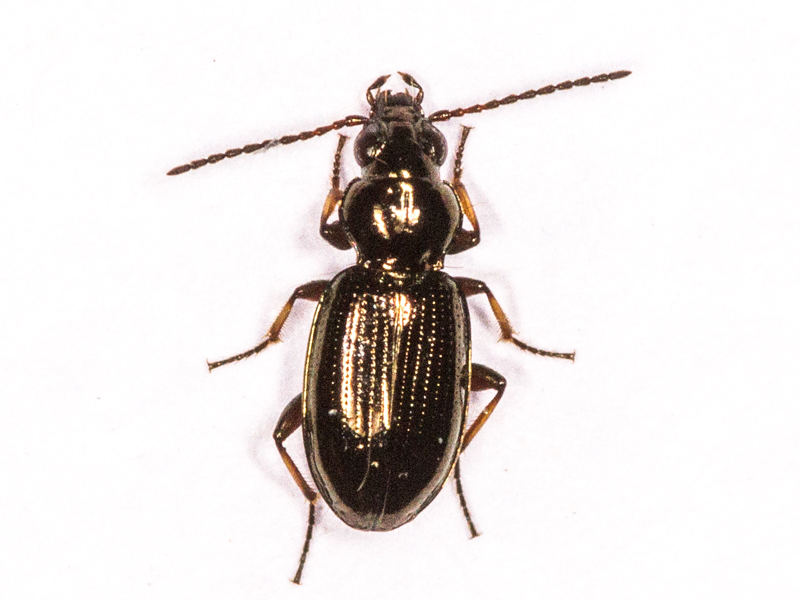
Bembidion properans, North Elmham (Norfolk, UK), 5th April 2023
.jpg)
.jpg)
2x Bembidion properans, North Elmham (Norfolk, UK), 18th April 2023
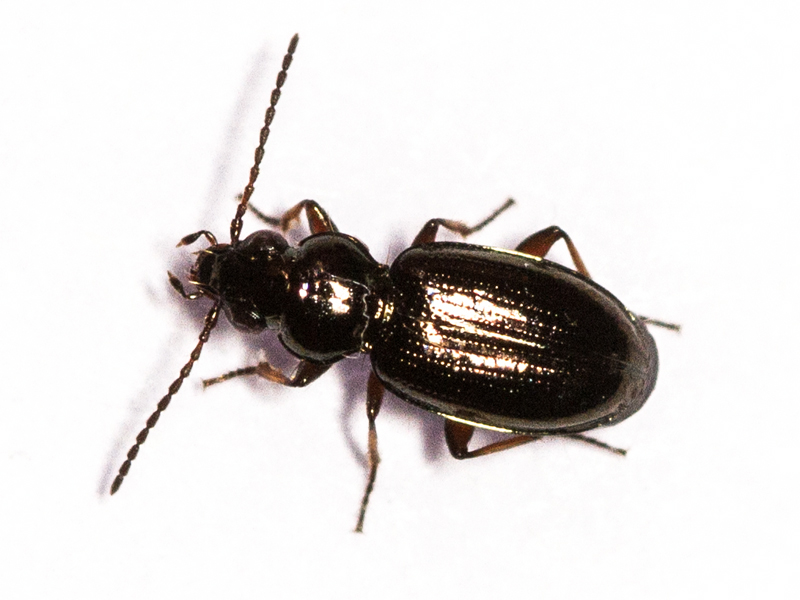
Bembidion properans, North Elmham (Norfolk, UK), 21st April 2023
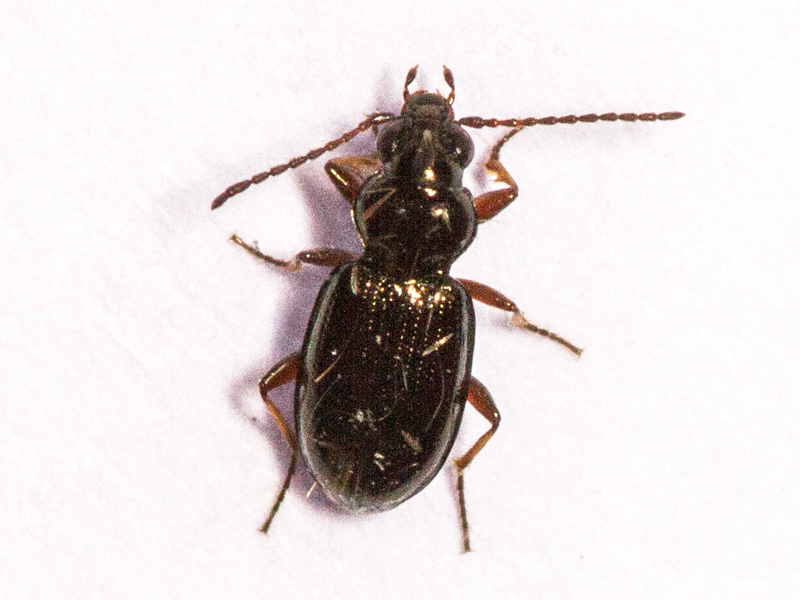
Bembidion properans, North Elmham (Norfolk, UK), 28th April 2023
.jpg)
.jpg)
2x Bembidion properans, North Elmham (Norfolk, UK), 29th April 2023

Bembidion properans, North Elmham (Norfolk, UK), 10th May 2023
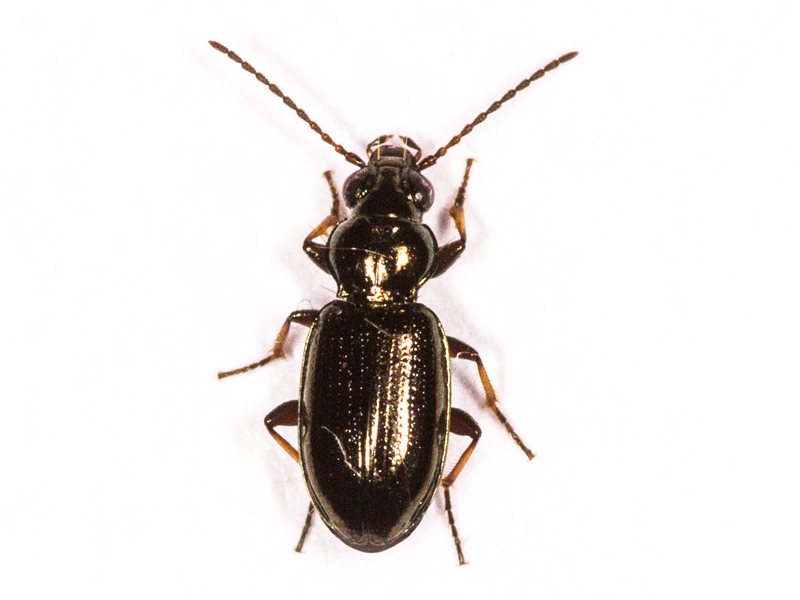
Bembidion properans, North Elmham (Norfolk, UK), 12th May 2023

Bembidion properans, North Elmham (Norfolk, UK), 13th May 2023
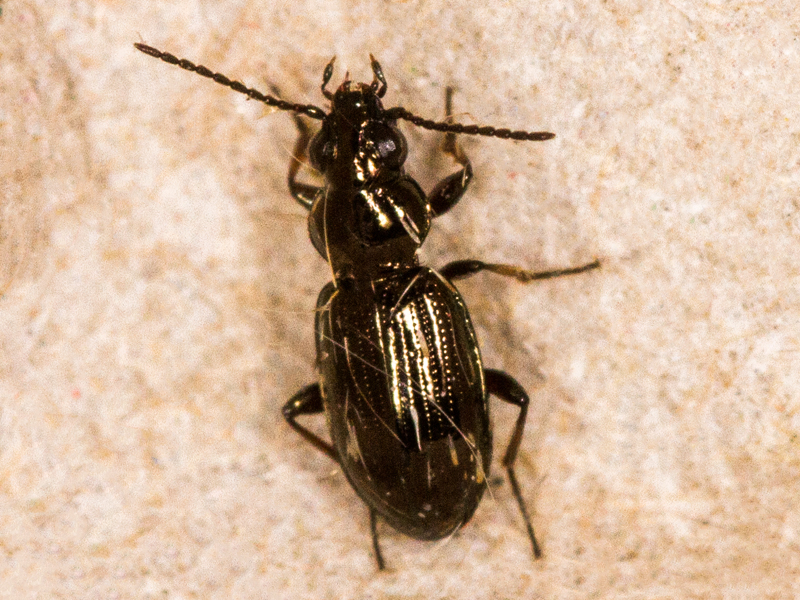
Bembidion properans, North Elmham (Norfolk, UK), 21st May 2023
Finally here are my older records of properans. I don't have close-up photos showing the ID characters and in view of the subsequent confusion I've experienced I have to question whether or not my original identifications are safe anymore. I think in view of the fact that properans has proved to be the usual species here it's probably safe to assume I was right about them, but I think it's best to treat the lampros with caution (especially as at least one of my photos looks like it shows quite a strong stria 7).

Bembidion properans, North Elmham (Norfolk, UK), 17th July 2020

Bembidion properans, North Elmham (Norfolk, UK), 27th June 2019
 (2).jpg)
Bembidion properans, North Elmham (Norfolk, UK), 16th April 2019
